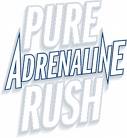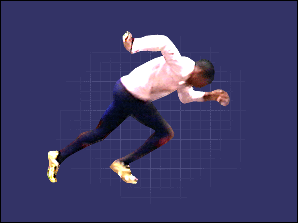The Science of Adrenaline for Fat Loss
 Remember the scene in Pulp Fiction where John Travolta jams the needle into Uma Thurmon’s heart after her drug overdose? That needle was filled with ADRENALINE to kick-start her heart…and adrenaline is also the hormone that runs through your veins when you rocket down the descent of your favorite roller coaster.
Remember the scene in Pulp Fiction where John Travolta jams the needle into Uma Thurmon’s heart after her drug overdose? That needle was filled with ADRENALINE to kick-start her heart…and adrenaline is also the hormone that runs through your veins when you rocket down the descent of your favorite roller coaster.
In the world of science, adrenaline is better known as “epinephrine”. Epinephrine is one of several hormones that belong in the larger category known as catecholamines.
Catecholamines are the “flight or fight” hormones released into the blood from your adrenal glands in response to stress. And good old caffeine is another stimulus for increasing catecholamines.
But what does all this science gobbledygook have to do with losing belly fat?
Well, if you believe Professor Steve Boutcher, an Australian researcher, INCREASING ADRENALINE is the key to losing belly fat.
Before we get into that, let me first introduce you to Professor Boutcher. He is Head of the Health and Exercise Science program in the School of Medical Sciences at the University of New South Wales in beautiful Australia. And more importantly, he was one of the Australian researchers involved in a landmark interval training study published back in 2007 that compared super-short intervals against long cardio for fat loss.
In this study, 45 obese Australian women were separated into one of two groups.
Group A performed three 20-minute interval training workouts per week using a special bike that allowed them to perform an 8-second interval followed by 12 seconds of recovery (light cycling). This was repeated over and over for the 20 minute workout.
Group B performed 40 minutes of slow, steady-state cardio three times per week. Please note that this group exercised TWICE as long as the interval training group.
It’s also important to note that NO changes were made to their diet.
As you know, I’ve always said that you can’t out-exercise a bad diet, and if these women were obese, I think you’d agree that they had a bad diet, right? So if they had a bad diet, we shouldn’t expect any results in either group.
In fact, one subject was quoted as saying, “My diet was pretty bad back then, with lots of sweets, lots of junk food. So just eating the same things, doughnuts and sugar — it was awful,” says Louise.
And yet by the end of this study, interval training helped Louise burn 8kg of fat in just 15 weeks – WITHOUT changing her diet.
Perhaps it IS POSSIBLE for you to out-train a bad diet with this unique form of interval training?
 So after 15 weeks, what happened?
So after 15 weeks, what happened?
Well, quite frankly, the results were remarkable.
Despite continuing with their bad diet, Group A – the interval training group – lost a significant amount of belly fat, leg fat, and butt fat. However, the steady cardio women – Group B – didn’t lose fat at all (one subject even gained 2.2 pounds after 15 weeks of slow cardio).
***********************************************************************
Here’s how Professor Boutcher explained the results…
“The group which did around eight seconds of sprinting on a bike, followed by 12 seconds of exercising lightly for twenty minutes, lost three times as much fat as other women, who exercised at a continuous, regular pace for 40 minutes,” said Boutcher.
“Intermittent sprinting produces high levels of chemical compounds called catecholamines, which allow more fat to be burned from under the skin and within the exercising muscles. The resulting increase in fat oxidation drives the greater weight loss.”
“This maybe unique to this type of exercise,” said Professor Boutcher. “We know it is very difficult to ‘spot reduce’ troublesome fat areas. When you do regular exercise, you tend to lose fat everywhere and you tend to look emaciated. Our results are unusual but were consistent across the women who performed the sprinting exercise.”
***********************************************************************
Very impressive results.
And here’s where the ADRENALINE kicks in, so to speak.
According to Dr. Boutcher, the fat loss can be explained by the release of adrenaline in the interval training condition. One of the functions of adrenaline is to break down fat stores and burn them.

Now what he doesn’t mention – at least in any of the articles that I’ve read – is that adrenaline can also DECREASE appetite. Knowing that, it’s easy to see how interval training and adrenaline will have a two-pronged affect on your fat loss.
First, it will help you burn fat faster than cardio. And second, it will help you decrease your calorie intake. PLUS, other research has shown that a steady-state cardio program actually causes some folks to eat MORE and gain weight (International Journal of Obesity 32: 177-184, 2008).
Now I’ll be completely honest, no one knows EXACTLY why interval training works so well for fat loss and why slow cardio fails, but as Dr. Boutcher says, adrenaline might be one reason that “high intensity intermittent exercise may result in greater fat loss in the abdomen”. Or in plain English, why interval training helps you lose belly fat.
But there’s one twist left in this story, and it goes back to the unique 8-second on, 12-seconds off interval training system used in this study.
Why did the researchers choose it and how can it be applied to TT Adrenaline?
To figure this out, we have to go back in time to 2004, when Dr. Boutcher and his group presented another research study on interval training. This one however, didn’t look at fat loss, but instead compared long intervals against short intervals.
The study was called, “Oxygen uptake response to high intensity intermittent cycle exercise” and was presented at the prestigious American College of Sports Medicine (Trapp, G., Boutcher, Y. N., & Boutcher, S. H. (2004). Oxygen uptake response to high intensity intermittent cycle exercise. Medicine and Science in Sports and Exercise, 36(5), Supplement abstract 1900).
In this small scale study, young women did two different training sessions.
Test 1: 20 minutes of short high intermittent intensity exercise (8-s sprint, 12-s recovery)
Test 2: 20 minutes of long high intermittent intensity exercise (24-s sprint, 36-s recovery)
What the researchers found was quite surprising. The first test, where the women did the 8-second sprint intervals, resulted in greater oxygen uptake and greater energy expenditure than the 24-second sprint.
That’s not just surprising, that’s SHOCKING.
Professor Boutcher’s study suggests that we might get better results if we use shorter interval training periods than what most trainers in the world are using.
But 8 seconds of sprinting, isn’t that impossible for the average person?
Not according to Boutcher, who says, “If you do it much longer, 20 seconds, it’s very painful. Normal people won’t stick to it. If you do it much shorter, two to three seconds, you don’t seem to get the same benefits. So by trial and error and prior research we’ve established what seems optimal for most people at least on the bike — eight seconds sprint, 12 seconds recovery.”
So HOW do we apply this to TT Adrenaline?
Well, I’m going to make another confession. In the TT Adrenaline program, while we do use the 8-second sprint method, it is also used in a much different way than Boutcher used it with his subjects. I’ll explain more about that in a moment.
But practically speaking, Boutcher says the best way to do the 20-minutes of 8s-12s intervals is by using a spinning bike. He also says a rowing machine will work.
And personal experience shows me that you can do this with shuttle sprints – and that’s what we use in TT Adrenaline.
However, it’s next to impossible – and dangerous – to try and replicate the 8 seconds of sprinting and 12 seconds of recovery on a treadmill. So that’s ruled out. But again, a spinning bike, where you can adjust the tension, could work just fine.
In TT Adrenaline, the short sprints are built into circuits within two of the three workouts, and I GUARANTEE you’ve never seen a workout like this before.
And just wait till you see the TT Adrenaline Circuit Challenge.
Can’t wait to see your score.
Train safe – but also train smart,
Craig Ballantyne, CSCS, MS
PS – Boutcher is also optimistic that this program can be done by all ages and fitness levels, saying in this interview…
“The eight-second sprint is doable by all the groups we’ve looked at – old people, you know, overweight people. Everybody, so far, we’ve tested has been able to do it. And in the 20-minute bout, the actual heart exercise is only eight minutes. So it’s not actually that much exercise.”
PPS – And of course, the standard rules apply:
See your physician before starting any exercise or nutrition program. You must have a complete physical examination if you are sedentary, if you have high cholesterol, high blood pressure, or diabetes, if you are overweight, or if you are over 30 years old. Please discuss all nutritional changes with your physician or a registered dietician.
**************************************